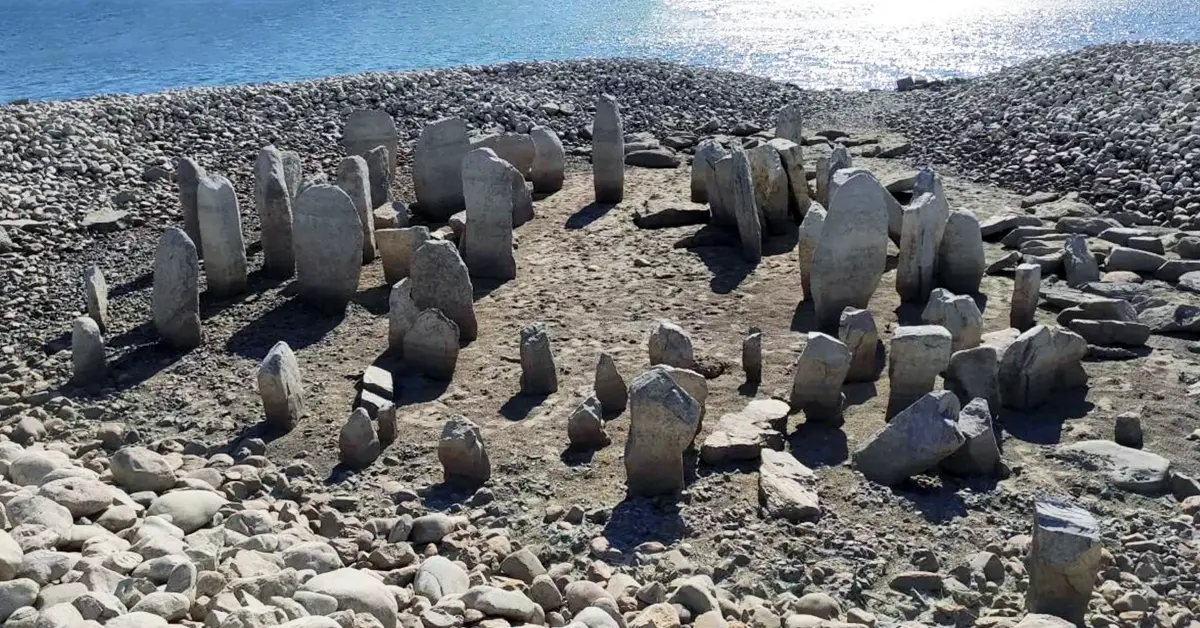La Torre – La Janera
A colossal megalithic site has been unearthed in southern Spain, marking a significant archaeological discovery near Huelva. The site, known as La Torre-La Janera, has revealed an astonishing array of standing stones, dolmens, stone circles, and mounds, potentially constituting one of the most substantial prehistoric finds in the region.
The exploration of this 7,000-year-old site commenced in 2018, initially slated for conversion into an avocado plantation. While megalithic structures were already documented in the area, the extent of this discovery surpasses all prior expectations.

Recent publication in the Trabajos de Prehistoria journal disclosed the identification of 526 ancient standing stones, the majority of which were found toppled. Among the findings are megalithic tombs and stone circles dating back approximately 7,000 years, with evidence suggesting local quarrying for the stones. The report deems this discovery as “unique” on the Iberian Peninsula.
Primitiva Bueno Ramírez, one of the project’s co-directors, highlighted the exceptional aspects of the find, including the unprecedented quantity of megalithic architecture, its remarkable preservation, and the coexistence of dolmens (tombs), alignments (rows running parallel), and cromlechs (stone circles) in one site. Ramírez also noted the likelihood of further discoveries as exploration continues.
According to José Antonio Linares, another co-director, this site boasts the most extensive and diverse collection of standing stones in the Iberian Peninsula. Situated near the Guadiana River, which separates Spain from Portugal, the site resides within the proximity of other known megalithic sites. Portions of the area have received special protection, and excavations are scheduled to continue until 2026.
X-Heritage (X Heritage)
Geolocation: 37.33830554, -7.40598343
Further Reading: Art News
Photo Credits: unknown author
La Torre – La Janera
A colossal megalithic site has been unearthed in southern Spain, marking a significant archaeological discovery near Huelva. The site, known as La Torre-La Janera, has revealed an astonishing array of standing stones, dolmens, stone circles, and mounds, potentially constituting one of the most substantial prehistoric finds in the region.
The exploration of this 7,000-year-old site commenced in 2018, initially slated for conversion into an avocado plantation. While megalithic structures were already documented in the area, the extent of this discovery surpasses all prior expectations.

Recent publication in the Trabajos de Prehistoria journal disclosed the identification of 526 ancient standing stones, the majority of which were found toppled. Among the findings are megalithic tombs and stone circles dating back approximately 7,000 years, with evidence suggesting local quarrying for the stones. The report deems this discovery as “unique” on the Iberian Peninsula.
Primitiva Bueno Ramírez, one of the project’s co-directors, highlighted the exceptional aspects of the find, including the unprecedented quantity of megalithic architecture, its remarkable preservation, and the coexistence of dolmens (tombs), alignments (rows running parallel), and cromlechs (stone circles) in one site. Ramírez also noted the likelihood of further discoveries as exploration continues.
According to José Antonio Linares, another co-director, this site boasts the most extensive and diverse collection of standing stones in the Iberian Peninsula. Situated near the Guadiana River, which separates Spain from Portugal, the site resides within the proximity of other known megalithic sites. Portions of the area have received special protection, and excavations are scheduled to continue until 2026.
X-Heritage (X Heritage)
Geolocation: 37.33830554, -7.40598343
Further Reading: Art News
Photo Credits: unknown author